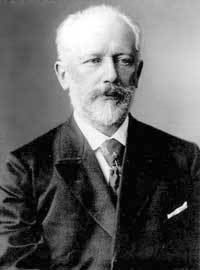 | ||
Pyotr Ilyich Tchaikovsky's symphonic poem Francesca da Rimini: Symphonic Fantasy after Dante, Op. 32, was composed in fewer than three weeks during his visit to Bayreuth in the autumn of 1876. It is dedicated to his friend and former pupil Sergei Taneyev.
Contents
In this fantasia, Tchaikovsky presents a symphonic interpretation of the tragic tale of Francesca da Rimini, a beauty who was immortalized in Dante's Divine Comedy. In the fifth canto of Inferno, Dante the narrator meets the shade of Francesca da Rimini, a noblewoman who fell in love with the brother of her cruel husband. After the lovers were discovered and killed in revenge by the husband, they were condemned to Hell for their adulterous passions. In their damnation, the lovers are trapped together in a violent storm, whirled through the air around the second circle of Hell, never to touch the ground again. They are tormented most of all by the ineradicable memory of the joys and pleasures of the embraces they shared in life.
In writing Francesca da Rimini, Tchaikovsky expressed a poignant identification with the heroine and her tragic fate, a sympathy which was also dramatically evoked in his ballet Swan Lake and the Romeo and Juliet Fantasy-Overture.
This symphonic poem, perhaps more than any other of Tchaikovsky's works, shows the possible influence of Franz Liszt, both musically and in terms of subject matter, and Richard Wagner, whose music dramas Tchaikovsky had traveled to Bayreuth to review. Liszt frequently chose subjects of a Gothic, diabolical nature: the Totentanz (1849), Sonata Après une lecture de Dante (1856), and Dante Symphony (1857) are cases in point. Tchaikovsky's use of swirling chromaticism in the depiction of the winds of the second circle of Hell also resembles Liszt, as well as Edvard Grieg's depiction of a stormy evening in his incidental music to Act V of the play Peer Gynt . As for Wagner, while Tchaikovsky generally did not care for his work, he freely acknowledged its influence on Francesca to Taneyev.
The piece has a duration of around 25 minutes.
Instrumentation
The music is scored for 3 flutes (third doubling piccolo), 2 oboes, English horn, 2 clarinets in A, 2 bassoons, 4 horns, 2 cornets in A, 2 trumpets in E, 3 trombones, tuba, timpani, bass drum, cymbals, tam tam, harp and strings.
Sections and plot
This symphonic poem has basically three parts, with a small introduction.
In the introduction the basses and the wind section of the orchestra open in dark tones suggesting the beginning of Dante's Inferno, where the author is astray from the right path into somber woods. As the music continues into the first section, the horror felt by Dante is portrayed in the music as he walks in deeper and deeper into the first circles of Hell. In the second section, the tempo picks up, the narrative takes the audience into the second circle, where Dante finds, amongst others -such as Tristan and Isolde-, Paolo Malatesta and Francesca da Rimini (née da Polenta) trapped together in a violent storm, whirled through the air around, violently crushed against ragged stone walls for eternity. In the third section, the music subsides, depicting Dante's request to speak with the doomed lovers (depicted by a solo clarinet), who recount their story of how Francesca was unwittingly married by proxy to Gianciotto Malatesta, Paolo's older, cruel and unattractive brother; the music continues to depict how they were unable to resist their fleshly attraction for each other and succumbed to their passion while reading a passage of the story of Queen Guinevere and Sir Lancelot [another pair of equally doomed lovers], depicted by the wind section supported by the strings in the moments of highest passion. The music also depicts the moment of their murder at the hands of Gianciotto, depicted by fast playing bassi and cymbals, followed by sombre horns in a requiem like theme. After their tale is over, the final section starts, depicting the eternal punishment that continues once more, leaving Dante (and the audience) in a state of shock depicted by the ominous tutti of the orchestra.
Notable recordings
On the 8 May 2010 broadcast of BBC 3'S CD Review - Building a Library, reporter Jonathan Swain surveyed recordings of Francesca di Rimini and recommended the 2007 recording by the Orchestra e Coro Dell’ Accademia Di Santa Cecilia conducted by Antonio Pappano as the best available choice.
